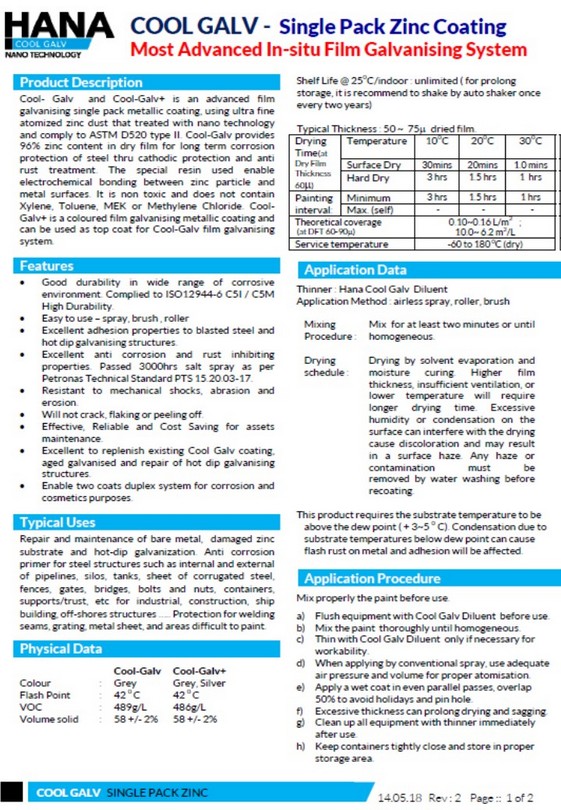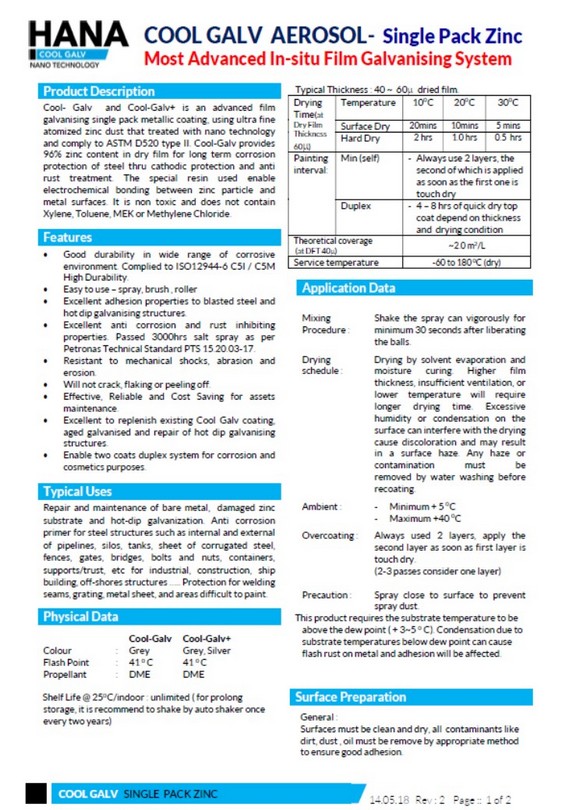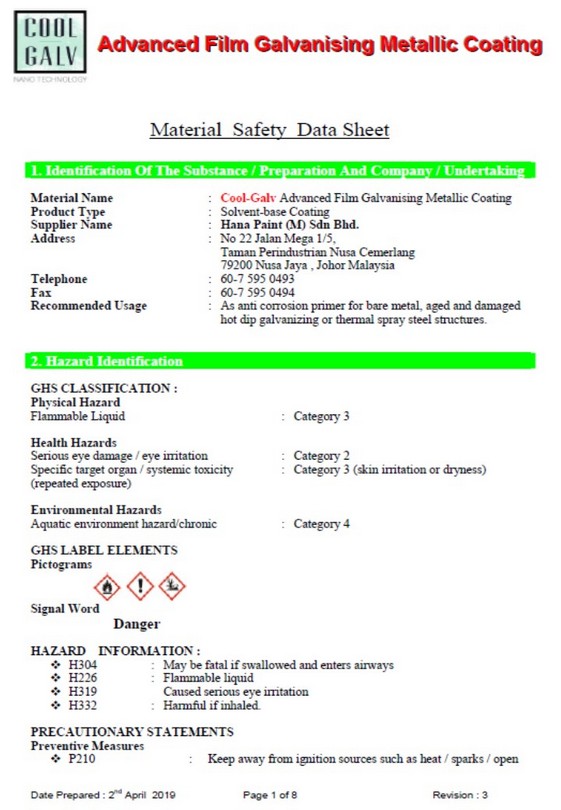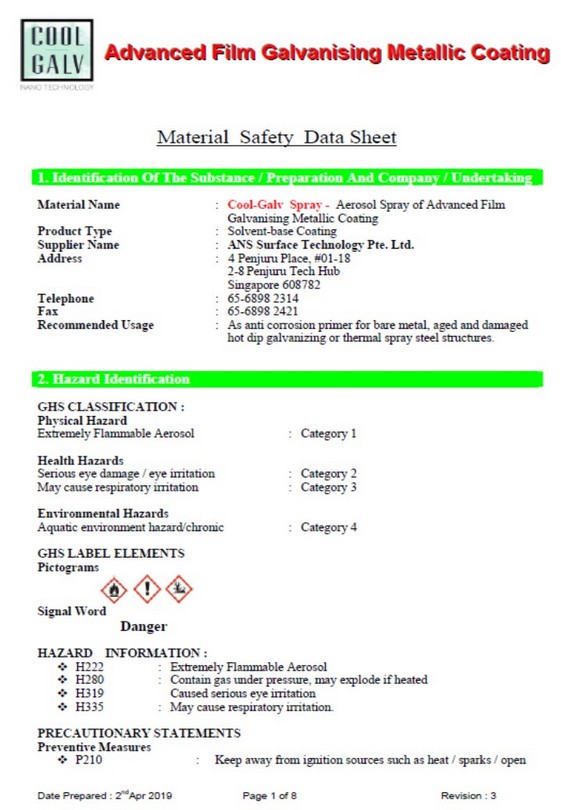Cool Galv

Corrosion Issue
Corrosion is a natural process that a metal react with oxygen and water to form a more stable state of its salt. The most common corrosion is iron that form red rust or iron oxide. Corrosion can be accelerated by the presents of electrolyte, temperature and chemicals.
Corrosion of iron or steel is a major concern to the asset owners and it costs millions of dollars and pose structural integrity & safety hazards.
Based on a study by NACE international, the global corrosion cost is estimated to be USD2.5trillion in 2017.
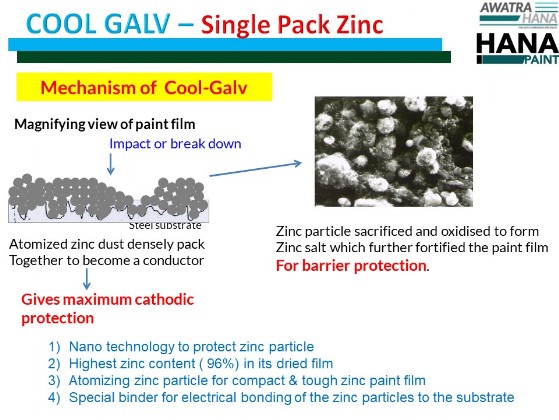

Unique Work of Art
Special Characteristic of COOL GALV
- Cool Galv Uses propietary nano technology to treat the atomizing zinc particles and a special binder for maximum electro-chemical bonding to the metal.
- It provides 96% of zinc content in its dried film and the atomising zinc particle is so fine that it fused into the cavity and profile of the metal substrate with good mechanical properties and cathodic protection.
- Once the zinc is oxidised through anode sacrificial effects, the zinc salts further fortified the film for enhanced barrier protection.
Cool Galv - New Way Of Galvanising
ISO 12944-6 C5M High - Salt Spray Test for Cool Galv Vs Hot Dipped Galvanising (HDG)
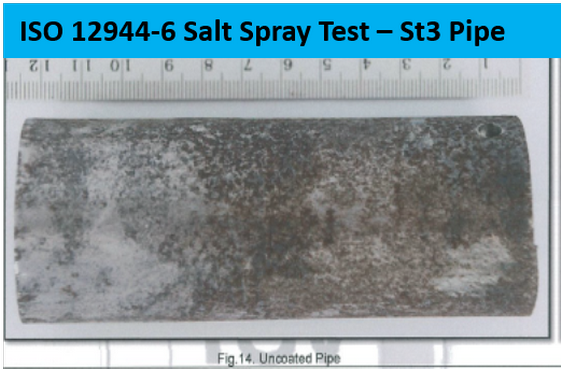
Benefits of Cool Galv
- SIMPLE - Ease of use, can be apply by roller, brush, spray, aerosol or dipping. Rapid drying, Moisture cure and surface tolerant to as low as St2 surfaces.
- SUPERIOR - Long term protection like hot dipped galvanising, complys to ISO12944-6 C5M/C5I High durability with life expeactancy of > 15years.
- SAVE - Cost Saving and Eco-friendly. Can save upto 50% as compare to hot dipped galvanising and 60-80 % for offshore maintenance.
ISO 12944-6 C5M High -Salt Spray Test for SPZ Premium Vs Hot Dipped Galvanising (HDG)
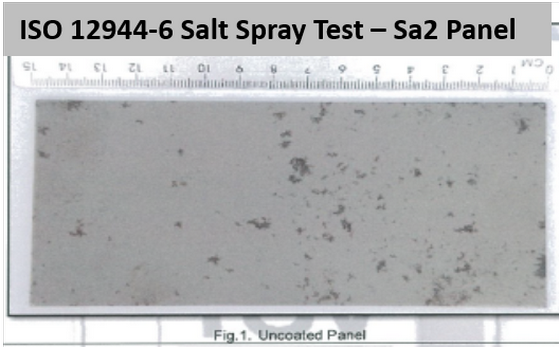
Technical Data Sheet & Safety Data Sheet
Third Party Evaluation of Cool Galv
1. SIRIM QAS MALAYSIA
a) Petronas Technical Standards PTS 30.48.00.31-P / PTS 15.20.03 Protective Coatings & Linings
- ASTM B117-11, ASTM D1654-08. Salt Spray Test - 3000 hours
b) ISO 12944-6 C5M / C5I High Durability
- ASTM B117-11: Salt Spray Test - 1440 hours,
- ISO 4628-2 : Blistering ;ISO 4628-3 : Rusting; ISO 4828-4 : Cracking; ISO 4628-5 Flaking, Corrosion of the substrate from scratch and ISO 4624 - Pull Off test of adhesion.
c) Adhesion Test
- ISO 2409:13 Cross-Cut Test ; ISO 4624 :16 Pull Off Test of Adhesion
2. TUV SUD PSB SIngapore
a) ISO 12944-6 C5M / C5I High Durability
- ISO 9227-12: Neutral Salt Spray Test - 1440 hours,
- ISO 4628-2 : Blistering ;ISO 4628-3 : Rusting; ISO 4828-4 : Cracking; ISO 4628-5 Flaking, Corrosion of the substrate from scratch and ISO 4624 - Pull Off test of adhesion.
- ISO 6270-2 : 2015 Determination of Resistance to humidity . Continuous Condensation 720hours
b) ISO 1461-2009 Hot dip galvanized coating on fabricated iron and steel articles - Specification & test methods
- Average mass zinc coating per unit area of steel surface , g/m3.
3. EXAMAT PTE LTD SIngapore
a) NFA 49-711 : Cathodic Disbondment Test
Contact
Top Customer Care
We're here to Help 24/7
Hana Paint Youtube Channel











